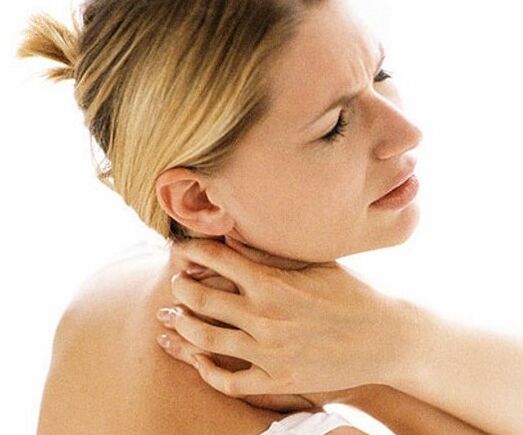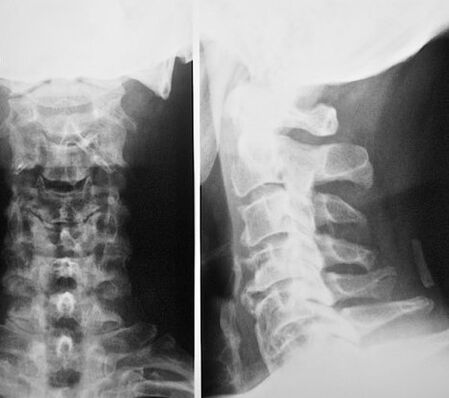Among all the diseases known to humanity, there are probably the most common motor equipment. The presence of a person over 40 is unlikely to be a person who does not experience problems with spine, a person who does not complain of joint pain or muscles. The cause of this phenomenon is often a fruzz, a reduction of a frictional lifestyle, decreased by age, car activity, salts and other harmful substances, violating the functionality of the bone system. In general, supporting and motorized orata diseases are seen only in people who are adult, but in recent years are diagnosed with such a disease in recent years. Especially degeneratively, dystrophic changes that affect neighboring cartilage, bone and nervous tissues, especially difficult to make dystrophic changes occur in tissues. This disease contains a disease in this disease, which violates the system of bone system, which is also considered the most common disease, and young people are not only adults, but also young people under the age of 35.

Osteocondrosis of the cervical region is a progressive disease, so it can cause untimely treatment and subsequent doctors - Spina, human disability. What is this insidious disease? What are the symptoms of cervical osteocondrosis and how can this disease be treated?
Cervical osteochondrosis is a progressive disease characterized on the deformed disks, which is characterized in the intervertebral disks that serve deformations, change the structure that caused a number of pronounced symptoms. The risk of the development of the osteocondrosis of the cervical region is the people with a lifestyle or professional activity related to the body in a long time. In terms of osteocondrosis, the lumbosakral harms the cervical spine after osteocondrosis. The identity and complexity of the disease, the lesion of the cervical region, almost always affect the nervous roots of spinal nerves and intervertebral disks.
The cervical section has a complex structure and each consists of 7 vertebrae performs a number of functions: supports its head, rotates, neck and other important functions. Among the spines are flexible and sustainable, intervertebral disks include intervertebral disks, which consist of fibrous rings in themselves. Cervical vertebraes are close to each other, so small physical activity can cause them to displace their displacement, which in turn causes blood vessels and nerves. The cervical spine is the vertebrate of the brain, which is responsible for the supply of blood. While squeezing them, the blood supply is broken, the brain does not take enough vital substance, no doubt does not receive enough vital substances that cause a number of complications that can cause the disability of the patient or even death.

Despite the dissemination of this disease and the spread of success in modern medicine, the pathogenesis of the osteocondrosis of the cervical spine was not fully studied. It is known that the disease can develop against the background of metabolic disabled causing a change in the structure of intervertebral disks and vertebral objects. Among other types of osteocondrosis is the most dangerous, because during its development, there is a pressure of nerve roots of the spinal cord and blood vessels, which leads to blood supply to brain cells. Pathogenesis of the disease distinguish several provocative factors that can lead to the development of the disease.
- A seated lifestyle.
- Violation of metabolic processes in the body.
- Salt collapse in the cervical region.
- Wrong or unbalanced diet;
- Long-term break in a position of the body: drive a car, work on the computer.
In addition to the factors that can cause the development of cervical osteochondrosis, experts distinguish people who risk the development of this disease.
- Genetic tendency.
- The injuries of cervical spine.
- Long or periodic hypothermia of the body.
- Hormonal imbalance.
- Support and chronic diseases of the engineer: Revmatism, Skoliosis, System Lupus Eritematosis.
- Overweight.
The reason for the development of cervical osteochondrosis may be other reasons, but anyway should be treated with the first signs of the disease.
How are the osteocondrosis of the cervical region and what are its symptoms?
Clinical signs of cervical osteochboard are slowly developing the osteocondrosis of cervical spine. The symptoms of the disease depend on the degree and number of damaged vertebres and the tweaks of the nervous ends. The main symptom of the disease is the pain in the spine, the neck, the lower back, the pain of different intensity in the spine, given to other bodies. After the results of the exam, only one doctor can diagnose "cervical osteoocondrosis", because the diversity of the disease clinic often looks like other pathologies, but everyone can suspect this disease.
- Pain to the head behind the head, ears, the front, front sleeve, chest, chest, shoulder. The painful feelings of different intensity are developed with minimal loads or headlines.
- Numbness of upper and lower extremities, burning, tingling.
- Headache, dizziness.
- An accident.
- Darkening in the eyes, "flies" in front of the eyes.
- Faints with the sharp return of the head.
- Noise in the ears.
- The numbness of the language.
- Violation of coordination.
- Reduce hearing, visual acute.
- Pain in the heart.

Clinical signs of osteocondrosis of the cervical region are expressed and progressing and progressing. Doctors engaged in the treatment of the disease, each distinguishes several syndrome of cervical osteokondrosis, which features its own characteristics, and depending on the damaged nerve spine.
- Recreation Syndrome - The cervical spine is developing as a result of the first nerve endings. The patient feels severe pain in the neck, the neck, back, shoulder and front sleeve.
- The spinal artery syndrome is characterized behind the head or with a legume headache in the temporary region. When your head, sleep or cough, the grillable pain and nape, burning pain in the neck, and cough, chest and shoulder.
- CARTIAL SINGROME is a group of all the symptoms that first resembling the signs of the angina pector. This syndrome is developing if the diaphragmatic nerve or large chest muscle damage damaged. The main signs are considered a crushing pain in the heart that does not pass after Nitroglycer. Such pains can last a few hours, driving or intensifying while breathing deep. Such symptoms in the patient causes panic as a heart attack.

Cervical osteochondrosis - symptoms and treatment depend directly on the damaged nerve spine. The number of cervical roots is 8 and the cervical vertebrae is 7. Each cervical nerve is on top of Vertebra and has its own symptoms with damage.
If the first and second cervical Vertebra (CI-II) were a defeat, then the sensitivity behind the back of the head will be concerned about the pain that attracts pain in Parietal and Oxipital.
The lesion of the nerve's end (C3) is extremely rare, but in spite of this, the sick pinch feels numbness in the area where the pinch is formed. Speed, language sensitivity is also impaired.
C4 causes the lesion of the nervous spine, collar or shoulder pain and numbness. Disorders in the respiratory system, the pain in the heart was recorded.
If the vertebral segment of the 5th department is broken, the patient's pain spreads, the outer surface of the shoulder, the sensitivity of the upper and lower extremities.
The most common events among the patients bathe C6 and C7 roots. Patients feel the sensitivity of the back, lower back, hands, back, hands, back, back, back, back, the sensitivity of the patients.
Pain, then pain, back, elbow, and the resistance will spread to the lower extremities. The numbness on the arms and legs of small fingers and legs is noticeable, the sensitivity of the skin is practically. The legs and hands of hands have a blue color because of blood circulation.
Along with pain syndromes, a patient with cervical osteochondrosis complains of other diseases described above symptoms: vision, dizziness, faints, etc.
You need to fulfill and view physiotherapy exercises only after consulting the doctor. In addition, the movement should discuss each execution with an expert, because the wrong position of the neck or limbs can further health and aggravate. Review several safe exercises that can be done and can be done for patients with cervical osteocondrosis.
- In a flat surface, in the position of stretching - spread your arms to the sides. Lift your arms, turn your body a little left, turn it with the light movements on the right. The left palms of your hand touch the right palm and vice versa. Such exercises 5 - 6 times.
- When lying on the stomach, stretch your arms across the body. Try to relax your muscles and slowly turn your head to the left. You need to try to touch the edge of the ear. As in the picture, such a training can be stopped. Do 8 - 10 times.

- Try to lean your chin in your stomach, your chin, your neck muscles should be comfortable. 5 times.
- Drink your head a little, then slowly down. The neck muscles will resist, so such a training should be carried out carefully. Repeat the exercise 5-6 times.
- You have to stand up exactly and make your shoulders. Then slowly turn your head to the right, then turn left. So 5 - 6 times.
- Throw your fingers behind the head, put your elbows together, put your forearm. Try to raise the reduced lever as much as possible. Repeat such a training 5 - 6 times.
- Take your knees. Lift your head up with slow moves and lower your body, drag your arms forward. So 5 - 6 times.
Physical physical education is very effective in the treatment of cervical osteochondrosis, but all exercises must be carried out regularly and properly. Of course, the situation from the first grades does not improve, so you must be patient.
Traditional medicine also showed effectiveness in the treatment of cervical osteochondrosis, which has collected a large number of recipes to help reduce the symptoms of the disease for hundreds of years. Osteocondrosis treatment with folk treatment is to use vegetables and animal products for external or internal use.
Recipe 1. Honey from cervical osteocondrosis. You need 1 - 2 teaspoon of natural bee cubs, 2 tablets mummy. Heat honey and mummy, you need to put a hot scarf, and join the night. Honey has an anti-announcement, biostimulating feature, so it can perfectly complete the treatment of these diseases.
Recipe 2. Osteocondrosis celery. 4 - 5 grams of celery should be poured with 1 liter of boiling water, stay thirsty for 2 - 4 hours, take 1 large spoon and take 1 big spoon a day.

Recipe 3. A decoction of chamomile and olive oil. You will need 30 grams of chamomile flower, 0, 5 l olive hole oil. Shepherd flowers need to pour fat, put a small fire, a boil and cool down. 2 days should you insist on a decoction, then tap it exactly and rub the sick areas with the resulting oil. Other herbs can be used with the chamomile: Celandine, Calendula, St John's Wort. If you do not have olive oil in your hand, you can buy sunflowers.
There is a traditional drug that helps to eliminate the symptoms of cervical osteochboard. However, it is important to remember that such treatment is effective only in the development of the disease and only traditional methods can be used in complex treatment.
Prevention of the neck osteochondrosis is an active lifestyle. In cases where there is a place for the development of this disease, you need to visit a doctor - orthopedically. A less important place is under occupation with food, it should be useful, rich in vitamins, minerals and other useful substances. Reduces the risk of developing or correcting excessive weight, as well as regular physical exercises, several times cervical osteocondrosis development risk.

















































